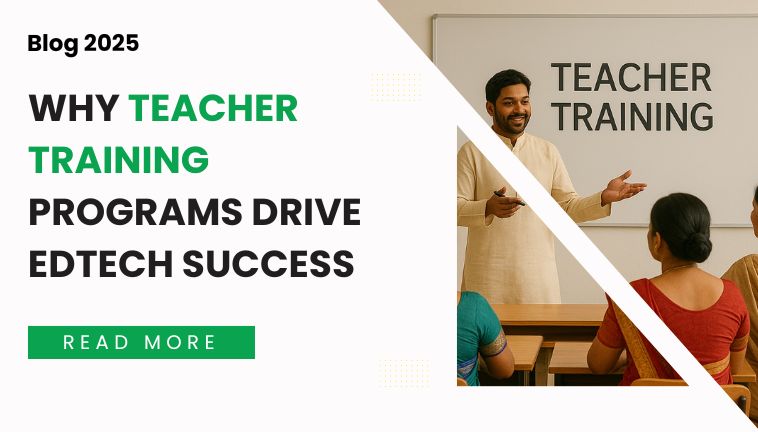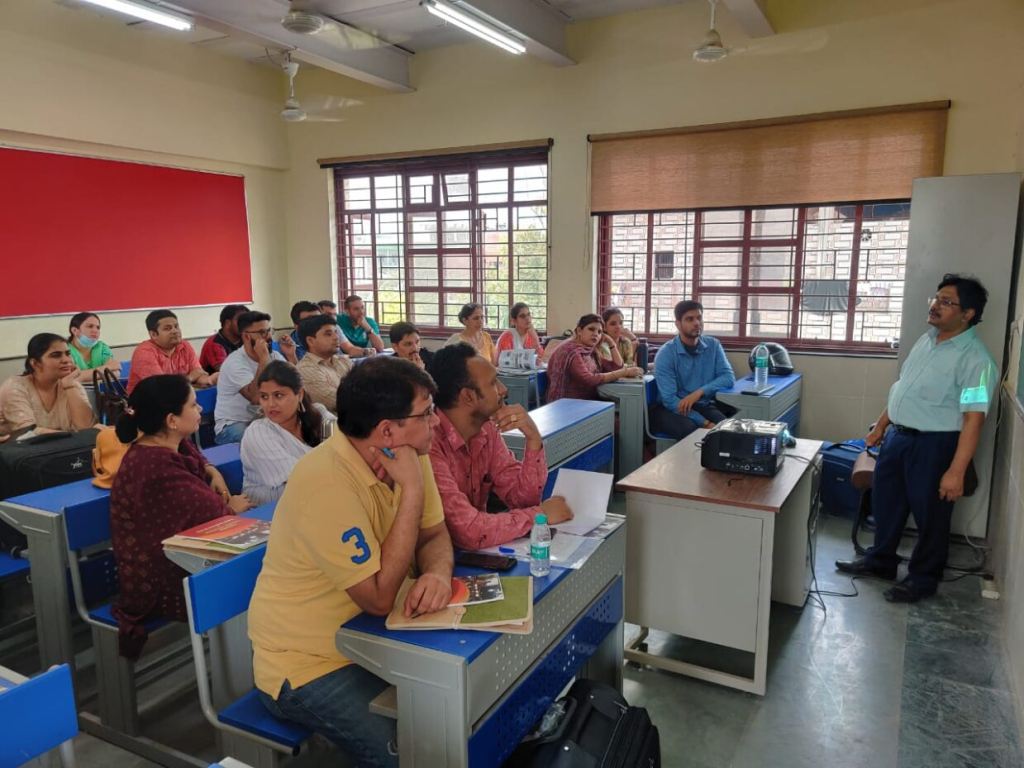Blogs
Why Teacher Training Programs Drive EdTech Success

“Technology doesn’t teach. Teachers do.” This simple truth is often forgotten in the rush to digitize classrooms. We celebrate devices, apps, and smart panels, but the real engine of change remains the teacher. Without the right training, even the best edtech tools can turn into expensive whiteboards. That’s why teacher training programs are not just a nice-to-have; they are the heartbeat of digital education.
The Classroom Gap Nobody Talks About
India has made huge strides in bringing technology into schools. Smart boards, tablets, and e-learning apps are everywhere. But here’s the catch: according to UNESCO, more than 50% of teachers worldwide still say they don’t feel confident using digital tools in class. In India, the gap is even wider.
It’s not about resistance. Teachers want to innovate. The issue is that most training programs are either one-off workshops or too theory-heavy. Teachers go back to their classrooms with no real idea how to blend that shiny new tool into their daily lesson plans.
And that’s the gap nobody talks about.
Why Teacher Training Programs Matter More Than Ever

For digital or smart classrooms to work, teacher training programs must do three things:
- Build digital confidence – Teachers need hands-on practice, not just manuals.
- Link tech to pedagogy – Tools must fit into how children actually learn.
- Support continuous learning – A one-day crash course won’t cut it. Teachers need ongoing mentoring.
Without these, edtech adoption becomes surface-level. Devices are installed. Apps are downloaded. But impact? Almost zero.
What Works in Digital Teacher Training Programs
Let’s get practical. What makes a training program actually work? Based on global best practices and real classrooms in India, here are some essentials:
1. Micro-Learning Modules
Small, bite-sized lessons are easier for teachers to absorb and practice. Think 15 minutes a day, not 15 hours at once.
2. Model Classrooms
Teachers learn best when they see a live demo. A real class, with real children, using real tools.
3. Peer Learning Communities
Teachers trust other teachers. A WhatsApp group, a peer circle, or a mentoring buddy can make digital adoption stick.
4. Contextual Content
Training must match the curriculum and language of the school. Imported models rarely work in rural India.
5. Feedback Loops
Teachers should get feedback not only on what they teach, but how they integrate tech. This keeps learning alive.
Teacher Training Programs and EdTech Success: The Link
Here’s the truth: EdTech fails when teachers feel left out. But when teachers are empowered, the results are stunning.
- Students engage more deeply.
- Classrooms shift from passive to active learning.
- Parents begin to trust digital education as meaningful.
Simply put, the success of any edtech rollout is tied directly to the success of its teacher training programs.
Looking Ahead: The Future of Teacher Training
The future is exciting. Artificial Intelligence will soon personalize teacher training just like it does for students. Imagine a teacher dashboard that shows:
- Which tools have you mastered
- Which lessons need digital integration
- Instant resources you can use tomorrow
This is not a distant dream. Pilot projects are already running. And with NEP 2020 emphasizing digital pedagogy, teacher training will only grow in importance.
How Schoolnet is Making a Difference
At Schoolnet, we have seen this firsthand. Over the last 25 years, our mission has been to blend technology with teacher empowerment. Through continuous teacher training programs, both online and in-person, we ensure that educators don’t just use digital tools; they transform them into engines of learning.
With innovations like KYAN and GENEO, we don’t stop at devices. We build ecosystems where teachers are confident, classrooms are lively, and students thrive.
Conclusion
EdTech is not about the gadget. It’s about the guide. Teacher training programs are what turn smart classrooms from a buzzword into a living, breathing reality. The schools that invest in training their teachers today will be the ones whose students lead tomorrow.
The question is not whether we need more devices. The question is: Are we giving our teachers the training they truly deserve?





